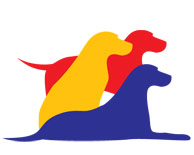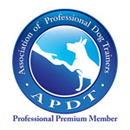By Joseph M Sabol
If you own a larger breed of dog or are looking for one, you may have heard the term OFA Certified. This refers to the dog’s hip joints and is an indicator of potential problems for your dog. Hip problems for any active dog will cause pain and discomfort that will get progressively worse. The unstable hip joint will lead to osteoarthritis.
So, what is OFA certification? The Orthopedic Foundation for Animals is the recognized certifying body to evaluate and determine if a dog will have problem hips. The foundation was established in 1966 by John M. Olin after he found that hip dysplasia was affecting his sporting dogs. Hip dysplasia is a genetic condition and can be evaluated by radiographs. The OFA maintains a database for hip dysplasia and now also maintains databases on other genetic disorders.
The Orthopedic Foundation for Animals has defined 7 categories to describe canine hip joints. They are: Excellent, Good, Fair, Borderline, Mild, Moderate, Severe. There are several different ways to treat hip dysplasia depending on the age of the dog and the severity of the problem.
For young dogs, under the age of 10 months, veterinarians can do surgery to stabilize the joint. This surgery is called triple pelvic osteotomy. It involves cutting 3 places in the pelvic bone, rotating the socket and stabilizing the ball part of the joint with plates and screws. This procedure is only for puppies because once there are arthritic changes in the joint, the surgery is not possible. Another surgical option is a total hip replacement. This is a complex procedure, usually done only at teaching hospitals and large specialty practices. It can cost as much as $1750.00 for one hip, which is usually all that needs to be done.
There are other non-surgical options available. One of the simplest and least expensive treatments includes weight management and exercise. Exercise should start with short leash walks which should gradually increase as the muscles get stronger. Strong muscles will help stabilize the joint and if the dog is overweight, losing weight will put less stress on the joint. This is effective treatment as long as the dog is not having pain from the exercise. You may have to backtrack to shorter walks. Cold and damp weather will aggravate joint pain for your dog, and warmth is soothing. If you suffer arthritis or joint pain and stiffness, your can understand how your dog feels.
Dogs can also be given non-steroidal anti-inflammatory drugs (NSAIDS). Your vet will know if and when this is an appropriate coarse. As with any medications, there are risks for side effects. Don’t ever give your dog your NSAID medication. Side effects of these drugs in dogs is the same it is for us. Side effects include, stomach upset, vomiting, diarrhea and decreased appetite. Some vets may recommend an all natural, human grade, pet supplement for your dog. It has been shown that glucosamine and chondroitin are helpful in rebuilding cartilage in the joint. It can take about a week of giving the supplement before the necessary level for results is reached.
It is important for you to consult with your dog’s veterinarian to discuss the best coarse of action for your pooch. With some help from you and the vet, your dog can live a full, active and pain free life.
Joseph M. Sabol is a world class Doberman breeder. Please go to http://petvitamins4u.com or to http://theroadhousedobes.com for further information
Article Source: http://EzineArticles.com/?expert=Joseph_M_Sabol http://EzineArticles.com/?OFA-Certification-and-Hip-Dysplasia&id=1961147
If you acquire a dog of medium size or larger from a breeder, the breeder should be able to provide the OFA certification for both parents. Each parent should have a certification of Excellent or Good.



